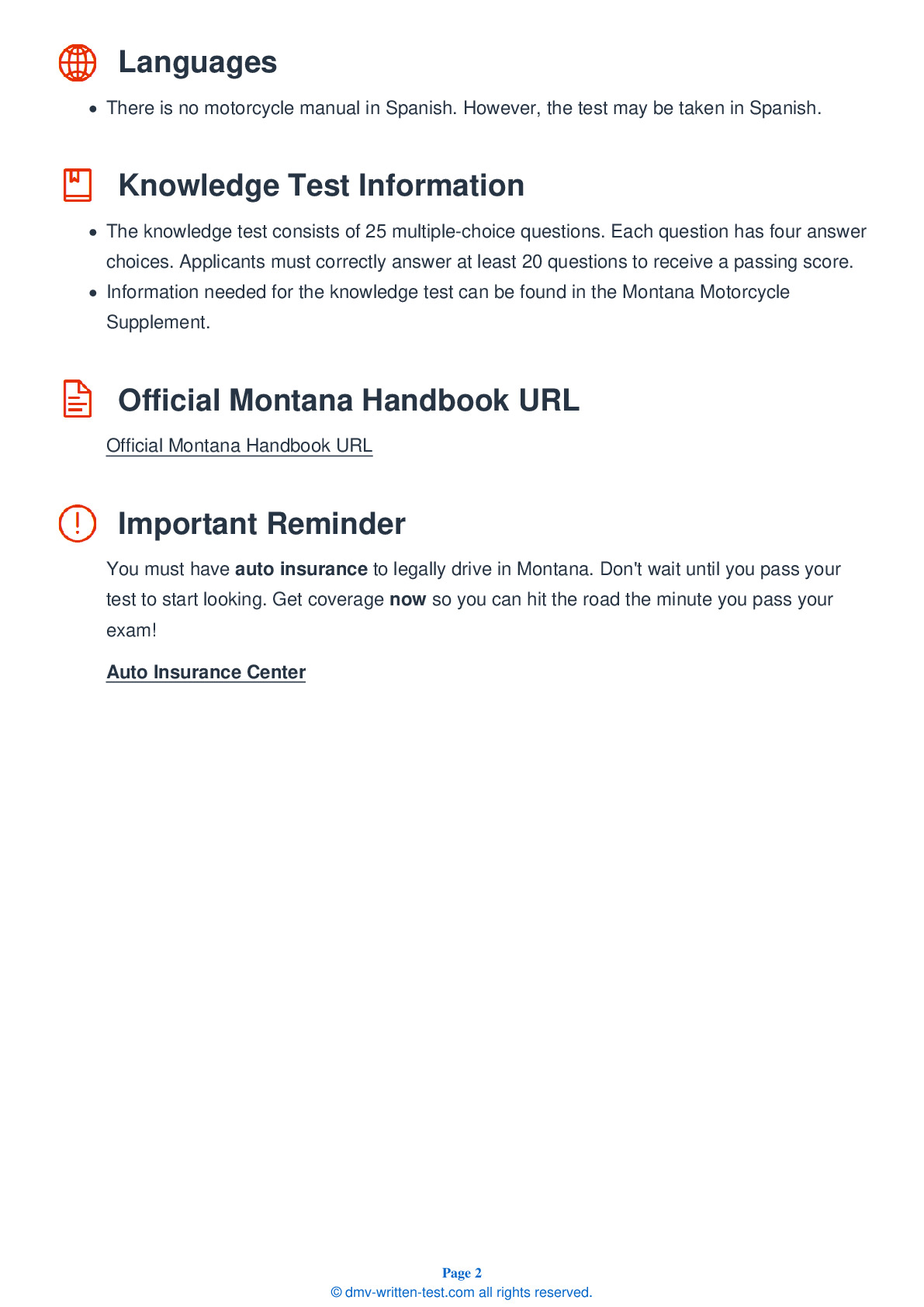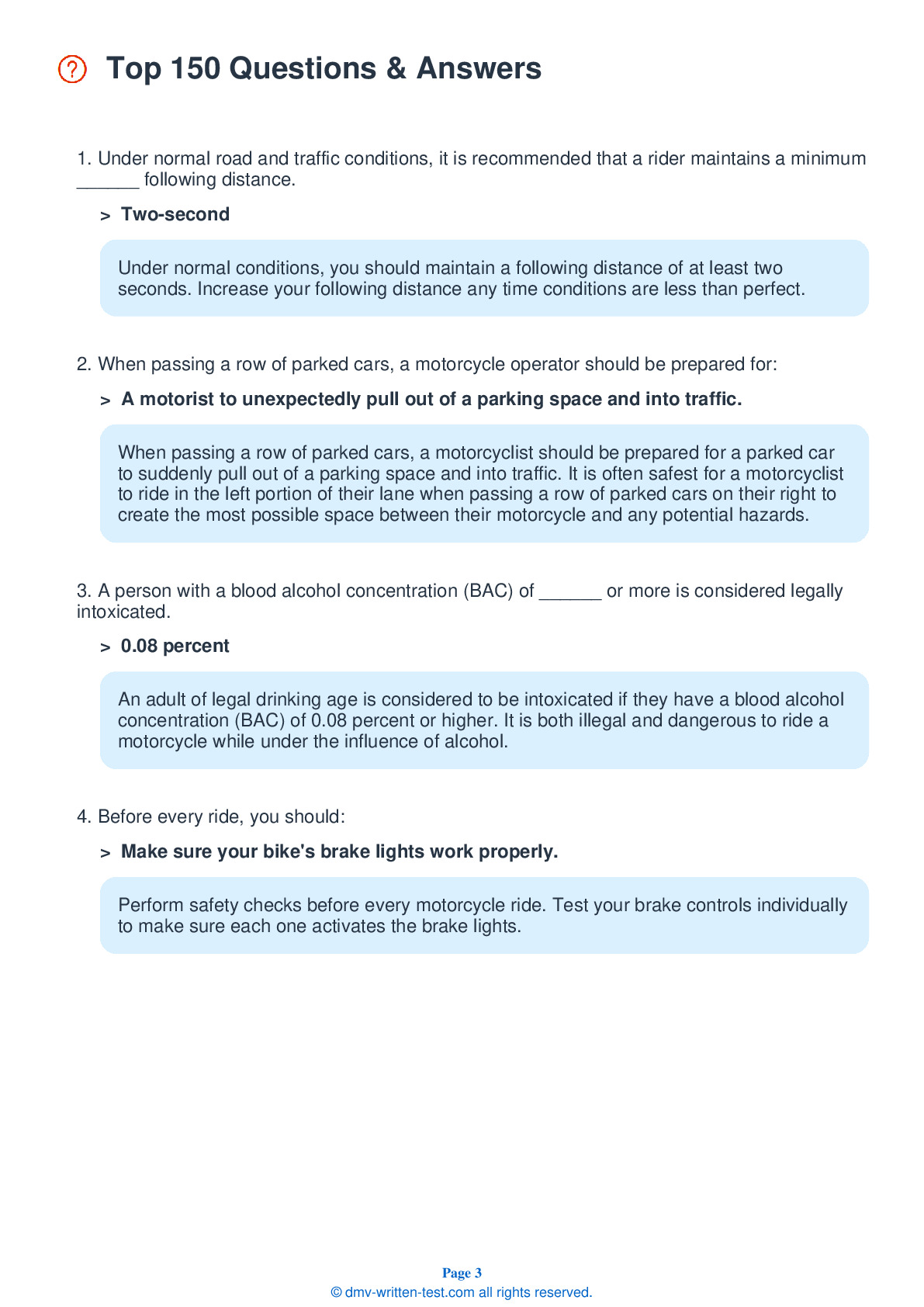2025 Montana Hardest Permit Test
The following questions are from real DMV written tests. These are some of the actual permit questions you will face in Montana. Each permit practice test question has three answer choices. Select one answer for each question and select "grade this section." You can find this button at the bottom of the drivers license quiz. For a complete list of questions and answers for Montana please visit https://cheat-sheets.dmv-written-test.com/en/montana/motorcycle.
Number of Tests
Number of Question
Passing Score
13. Your primary source for information about your motorcycle should be:
Explanation
Your owner's manual should be your primary source for information about your specific motorcycle. Your manual will include information about the motorcycle's specifications, operation, and suggested maintenance.
14. The single most important thing you can do to improve your chances of surviving a crash is to:
Explanation
The single most effective action you can take to improve your chances of surviving a crash is to wear a high-quality helmet that is securely fastened.
15. Which of the following is not considered protective clothing for a motorcyclist?
Explanation
You should wear appropriate protective clothing when riding. Protective garments include sturdy pants and jackets that entirely cover your arms and legs, boots or heavy shoes that cover and support your ankles, and sturdy gloves.
16. Since most crashes happen during daylight hours, you should:
Explanation
Most motorcycle crashes happen in broad daylight. You should always wear brightly-colored clothing when riding to maximize your chances of being seen, even during the day.
17. Which of the following surfaces provides the best traction for a motorcycle?
Explanation
A number of surfaces can provide poor traction for tires. Wet pavement; roads covered in loose gravel or sand; muddy, snowy, or icy areas; painted lane markings; and metal covers and plates in the road can be more hazardous for a motorcyclist than dry pavement.
18. When checking tire pressure:
Explanation




